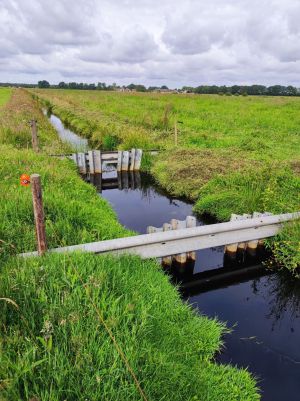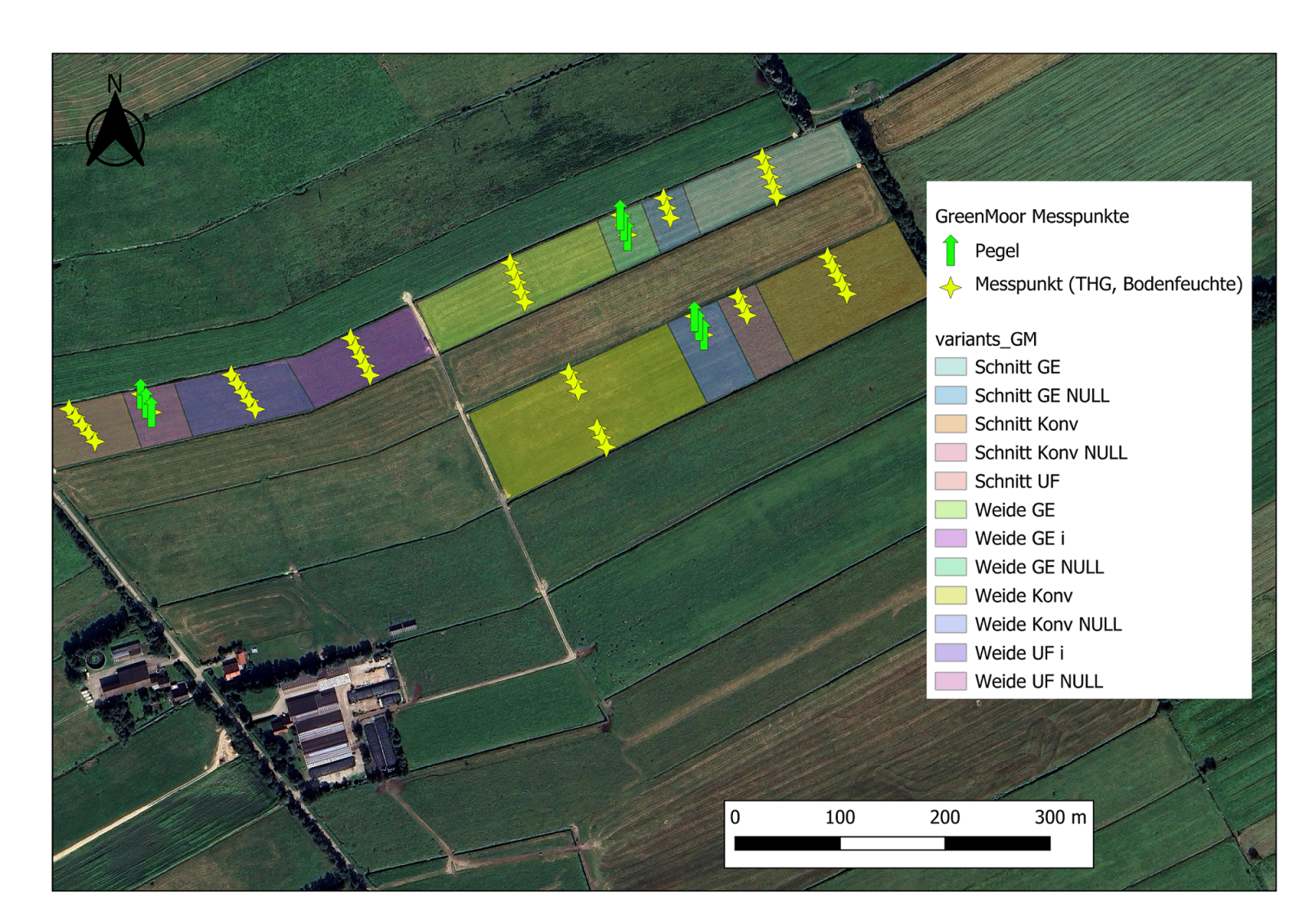GreenMoor
Sustainable dairy farming on raised bog soils
Background

The GreenMoor project investigates optimization opportunities for grassland use on raised bog sites that are used for dairy production. The emissions of climate-relevant gases such as CO₂ and nitrous-oxide are to be significantly reduced through elevated water levels, adjusted fertilization and optimized grazing and cutting strategies. Ultimately it is the goal of the project to develop a dairy production management on partially rewetted bogs that is compliant with climate protection.
Grassland use on drained bog sites leads to high CO₂ emissions, averaging around 30 tons of CO₂ per hectare and year. At the same time, dairy farming in the northwestern part of Lower Saxony is an immensely important economic sector, providing the livelihood for many people. The goal is, therefore, to link climate protection with dairy farming, reduce greenhouse gas emissions from this sector, and implement a future-oriented and sustainable grassland usage on bogs.
On the Hanken dairy farm in Elsfleth in northern Lower Saxony, water levels are being raised to the highest possible level (20 cm below soil surface) on several hectares through ditch blocking and subsurface irrigation. Additionally, the minization of nitrogen input through reduced fertilization is planned in order to reduce N2O emissions which are also critical from agriculture on drained peatlands, including bogs.
Greenhouse gas emissions (CO₂, methane, and nitrous oxide) are measured at high frequency with manual chambers and subsequently balanced for each experimental variant. Further, different grazing and cutting methods and their management are being used to develop a practical approach to managing wetland areas and thereby enabling dairy farming on partially rewetted bogs. It is expected that raising the water levels will lead to a significant reduction in CO₂ emissions, making future dairy farming more sustainable. In terms of practical management, the soil's resistance to trampling is a key consideration.
Eventually, recommendations for action regarding climate-friendly grassland use on raised bog areas will be developed and communicated to science, farmers and other stakeholders.
Aims of the project
- Raising the average water level on drained raised bog grassland areas to about 20 cm below the soil surface
- Minimizing nitrogen input through fertilization
- Significant reduction of CO₂ and N₂O emissions
- Implementation of practical grazing and cutting methods on wet grassland
- Development of a climate protection-oriented dairy farming system on grassland sites
Partner
Grünlandzentrum Niedersachsen | Bremen e.V (link)













